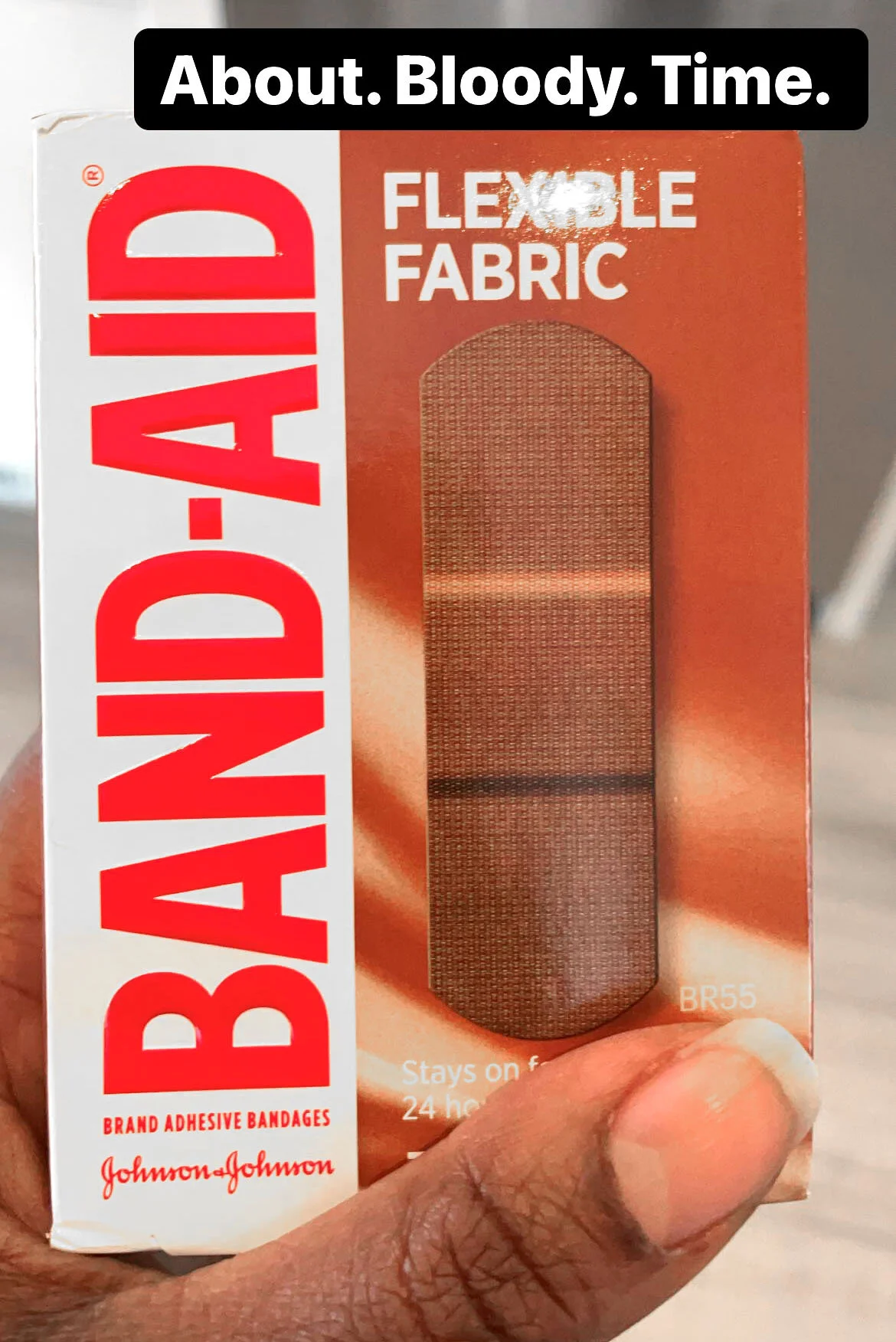It was a typical day of grocery shopping with my 2-year-old son. He was drawn towards a pack of paw patrol gummies, his eyes bright with delight as he put the pack in the basket. Little did my son know that I too was aglow with my soon to be purchase; a pack of brown coloured Band Aids made for people like me.
I felt like I was buying cosmetic foundation as I stared at the colour assortments that went from beige to dark brown. I put my hand against the packs and found the shade that best matched me and quickly put it in the basket before anyone else could take it. These were my Band Aids, designed with me in mind. This was a big deal.
I screamed with delight down the aisle to a Black woman who worked in the store ‘Did you know they have band aids for Black people?’ ‘We’ were finally seen, acknowledged, and catered for. Today was a great day to go shopping.
Until...
I returned home and uploaded an image of my hand next to the Band Aid pack with a caption “About. Bloody. Time.” The response was overwhelming and surprising:
“OMG I had never even thought of different coloured plasters! So awful its only happening now!”
“High Five (Emoji).”
“Agreed. That’s the coolest! I hope they aren’t more expensive.”
“100% (Emoji).”
“I am actually gobsmacked. I had to research this because I didn’t know whether you meant it was the flexible fabric or the colour – I was like no way have Jonson and Johnson (or any brand for that matter) only just included this colour of plaster. Jesus Christ.”
ALL of these responses were from white people.
All of these responses made me look at my experience a little differently.
The initial reaction of being validated was short lived and the stark reality of being a person of colour kicked in. A reminder that we, the Black community, have been unseen for many years. Basic privileges, such as a plaster being designed in multiple shades to meet the functional needs of a diverse community are only just taking front stage in 2021. Is this an example of systemic racism in the form of unconscious bias deeply rooted in corporations? And/or is this an example of authentic and positive change?
While these coloured Band Aids were designed to be inclusive, what they have also done is remind people that we were forgotten and overlooked, and this feeling made my friends/family feel very uneasy.While 65% of Black Canadians are looking for corporations to enact positive racial change, my recent experience has led me to believe that this change will come at a cost. Until change is plentiful, consistent, and authentic there will be a dual emotional response. One that celebrates the positive change underpinned by the feeling of being forgotten.
In summary, organizations should be encouraged and continue to be a part of positive racial change.
BUT
they should also be realistic in knowing that the fight against systemic racism is a journey and not an event.




